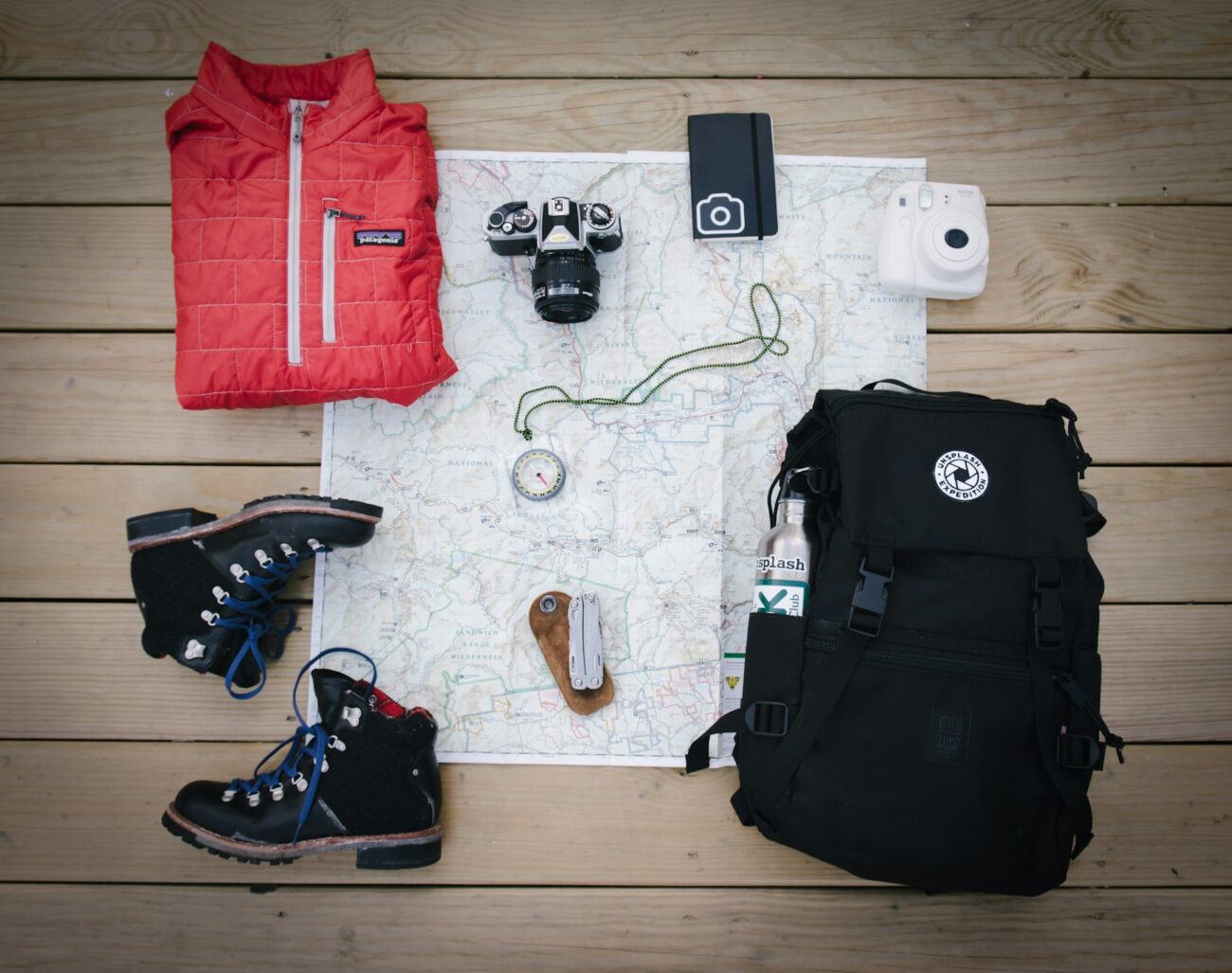The call of the wild beckons countless adventure seekers to hiking trails each year, offering breathtaking vistas, refreshing encounters with nature, and the simple joy of outdoor exploration. Yet, the difference between an exhilarating journey and a potentially dangerous situation often comes down to preparation. Whether you’re planning a brief nature walk or a challenging multi-day trek, having the right equipment is crucial.
Experienced hikers understand that certain items are non-negotiable for safety, comfort, and enjoyment on the trail. This comprehensive guide outlines the 15 essential items that should accompany you on every hiking adventure, ensuring you’re prepared for whatever the wilderness might present.
1. Navigation Tools

Even in our digitally connected age, reliable navigation tools remain indispensable for any hiking expedition. A detailed topographic map of your intended route provides crucial terrain information that can help you understand elevation changes and identify potential water sources or shelter locations. A compass serves as a failsafe when electronics falter, allowing you to maintain directional awareness even without satellite signals.
Many experienced hikers also recommend carrying a GPS device or smartphone with pre-downloaded maps that function offline, though these should always supplement rather than replace traditional navigation methods. Remember that electronic devices can fail due to battery depletion, water damage, or signal issues, making the map-compass combination your most reliable navigational foundation.
2. Adequate Water Supply
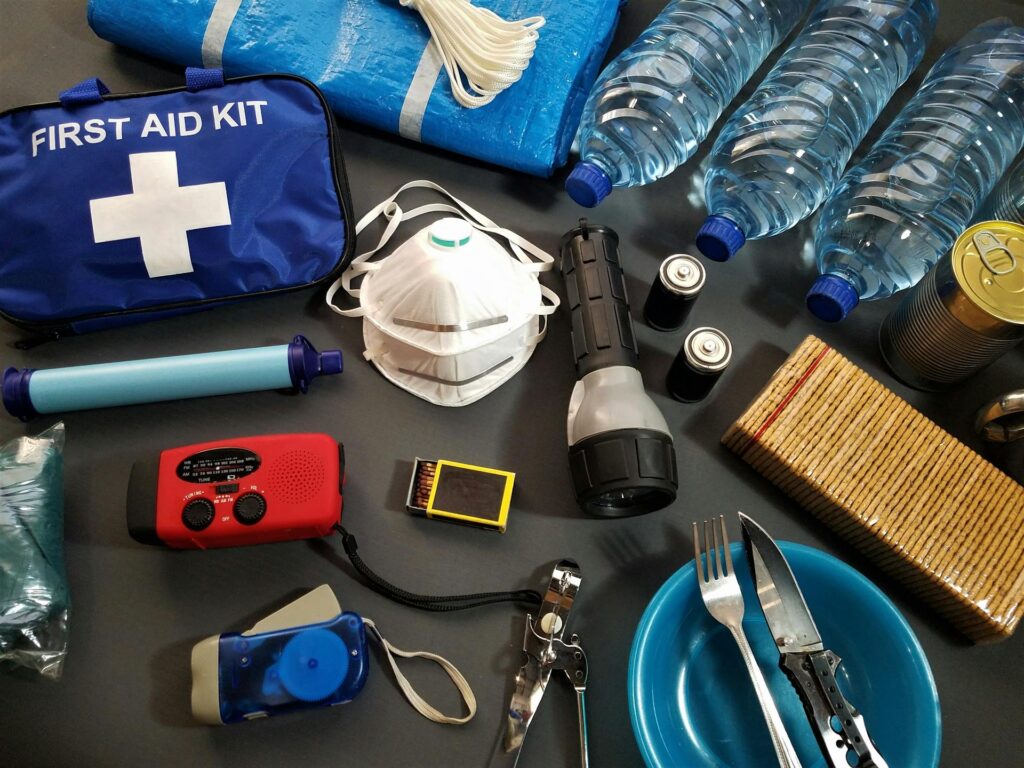
Proper hydration stands as perhaps the most critical factor in maintaining your health and energy levels during a hike. The general recommendation is to carry at least one liter of water for every two hours of hiking activity, though this amount should increase in hot weather or at higher altitudes where dehydration occurs more rapidly. Beyond simply carrying water, consider including a portable filtration system or purification tablets that allow you to safely replenish your supply from natural sources along your route.
Hydration bladders with drinking tubes provide convenient access to water without stopping, encouraging more regular sipping throughout your journey. Remember that by the time you feel thirsty, you’re already experiencing the early stages of dehydration, so maintain consistent water intake throughout your hike.
3. Nutritious Food

The energy demands of hiking necessitate careful food planning to maintain stamina and focus throughout your adventure. Pack calorie-dense foods that provide sustained energy through a balanced combination of complex carbohydrates, proteins, and healthy fats. Trail-friendly options include nuts, dried fruits, energy bars, jerky, and nut butter packets that resist spoilage and provide significant nutrition relative to their weight.
For longer hikes, include more substantial items like bagels with hard cheese or tortillas with tuna packets that provide satisfying meals without requiring cooking equipment. Always pack slightly more food than you anticipate needing to account for unexpected delays or increased appetite due to exertion. The ideal hiking diet focuses on foods that deliver steady energy rather than the quick peaks and crashes associated with simple sugars and heavily processed snacks.
4. Weather-Appropriate Clothing
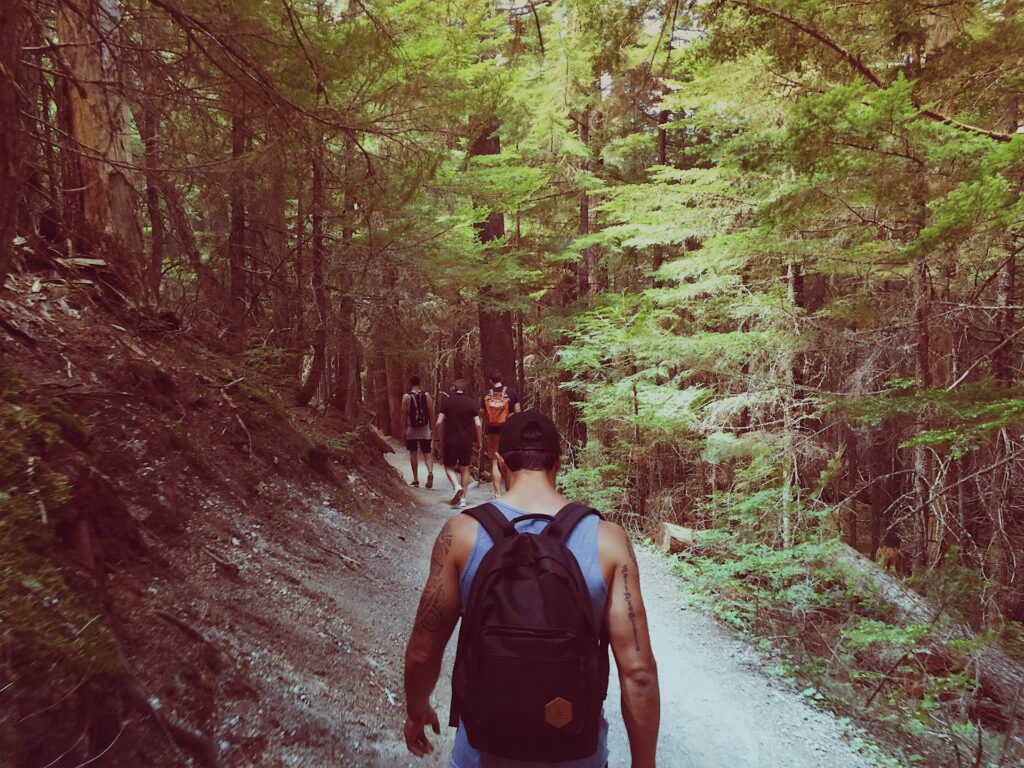
The unpredictable nature of outdoor environments demands a clothing strategy built around layering and adaptability. Your base layer should consist of moisture-wicking materials that move perspiration away from your skin to prevent chilling and discomfort as you exert yourself. The mid-layer provides insulation, with materials like fleece or down trapping body heat while still allowing moisture to escape. An outer shell layer should offer protection from wind and precipitation while maintaining some breathability to prevent internal condensation from perspiration.
Even on seemingly clear days, include a waterproof jacket, as mountain weather can change dramatically with little warning. Additional considerations include appropriate footwear with ankle support, moisture-wicking socks, sun-protective hats, and gloves for cold-weather hiking or protection when navigating rough terrain.
5. First Aid Kit
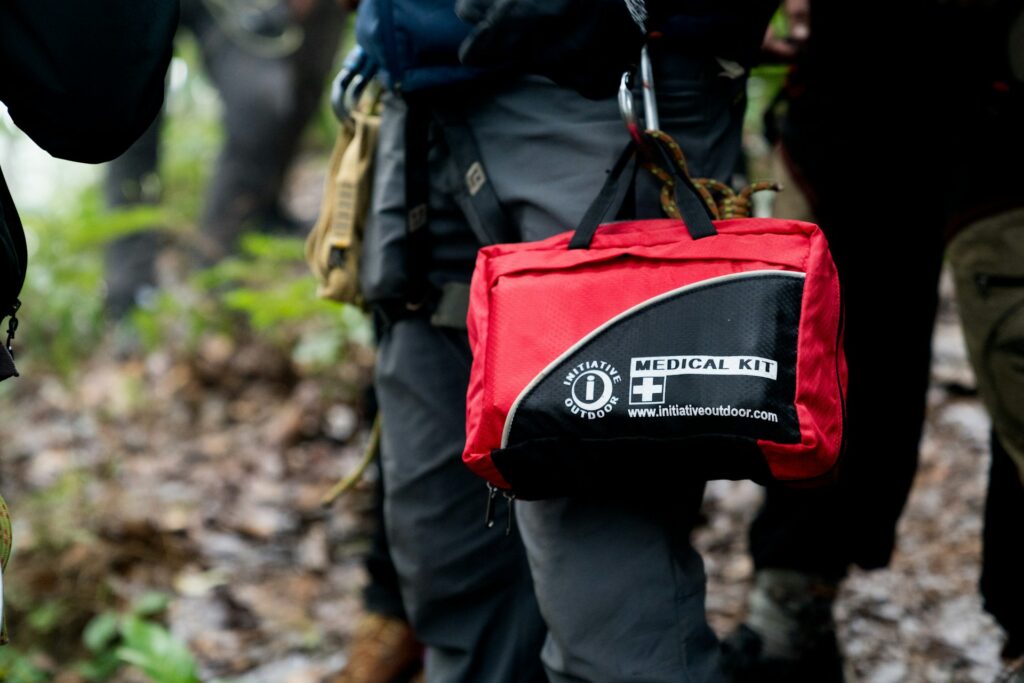
A well-stocked first aid kit represents essential preparation for addressing injuries and medical situations that may arise during your hiking adventure. Basic kits should include adhesive bandages in various sizes, gauze pads, adhesive tape, antiseptic wipes, antibiotic ointment, pain relievers, blister treatment supplies, and any personal medications you require. For more remote hiking, consider adding emergency items like a CPR mask, emergency blanket, tweezers for removing splinters or ticks, and a small guide to wilderness first aid procedures.
Customize your kit based on your specific health needs and the particular challenges of your hiking environment, such as insect repellent in mosquito-prone areas or specialized blister prevention products for challenging terrain. Remember to check your kit before each trip to ensure supplies remain fresh and haven’t been depleted during previous outings.
6. Sun Protection
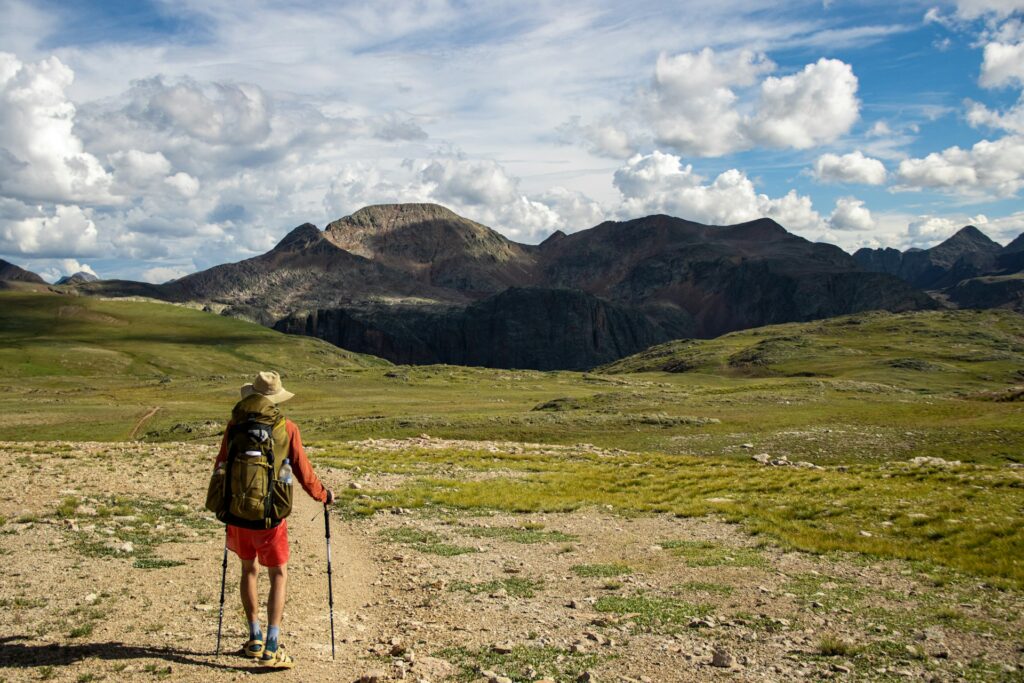
Exposure to solar radiation intensifies significantly at higher elevations, making comprehensive sun protection crucial even on cloudy days. Begin with a broad-spectrum sunscreen offering SPF 30 or higher, applying it generously to all exposed skin areas at least 15 minutes before sun exposure and reapplying every two hours or after sweating heavily. Protective clothing with UPF (Ultraviolet Protection Factor) ratings provides more consistent protection than sunscreen alone, particularly long-sleeved shirts and pants designed for hot weather with ventilation features.
A wide-brimmed hat shields your face, ears, and neck from direct sun exposure while quality sunglasses with UV protection prevent eye damage and reduce glare-induced fatigue. In especially exposed terrain like alpine meadows or desert landscapes, consider carrying a lightweight umbrella that can provide portable shade during rest breaks or when natural shade is unavailable.
7. Multitool or Knife
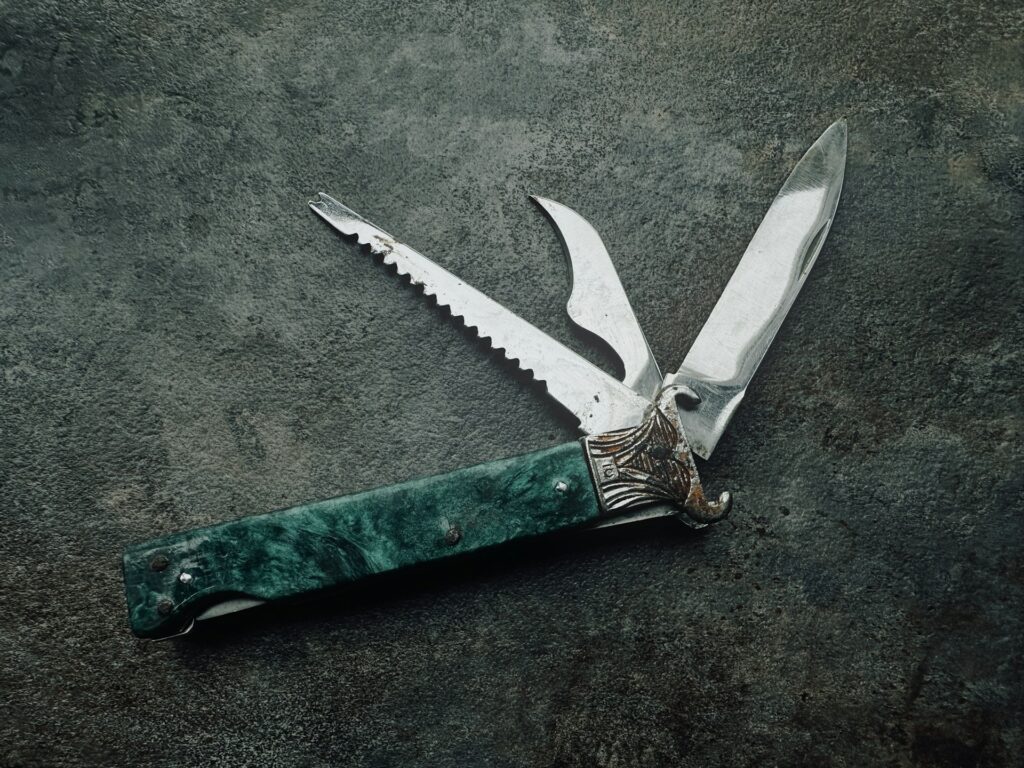
A quality multitool or knife serves as the cornerstone of your emergency preparation and routine utility needs on the trail. Beyond the primary cutting blade useful for food preparation or gear repairs, look for a tool featuring additional functions like pliers for removing splinters, scissors for cutting bandages, a can opener for emergency food, and potentially screwdriver attachments for equipment adjustments.
Folding models with locking blades provide the best balance of safety and portability for hiking purposes. Consider blade length and tool configuration based on the specific requirements of your typical hiking environment and the tasks you most commonly perform while outdoors. For lightweight day hikes, a simple pocket knife might suffice, while more remote backpacking expeditions might warrant a more comprehensive multitool with additional functionality for addressing a wider range of potential needs.
8. Fire Starting Tools

The ability to create fire represents one of the most fundamental wilderness skills, providing warmth, cooking capability, signaling options, and psychological comfort in emergency situations. Carry at least two independent fire-starting methods such as waterproof matches stored in a sealed container, a quality lighter protected from moisture, and a ferrocerium rod (fire steel) that creates sparks even when wet.
Supplement these primary tools with fire accelerants like commercial fire starters, petroleum-jelly-soaked cotton balls, or dryer lint stored in waterproof containers that can help establish flames even in damp conditions. Understanding how to select and prepare appropriate tinder, kindling, and fuel wood from your environment complements your fire-starting tools, creating a complete fire-making system. Remember to always follow local fire regulations and practice extreme caution with fire in wilderness settings, especially during dry seasons or in fire-prone environments.
9. Emergency Shelter
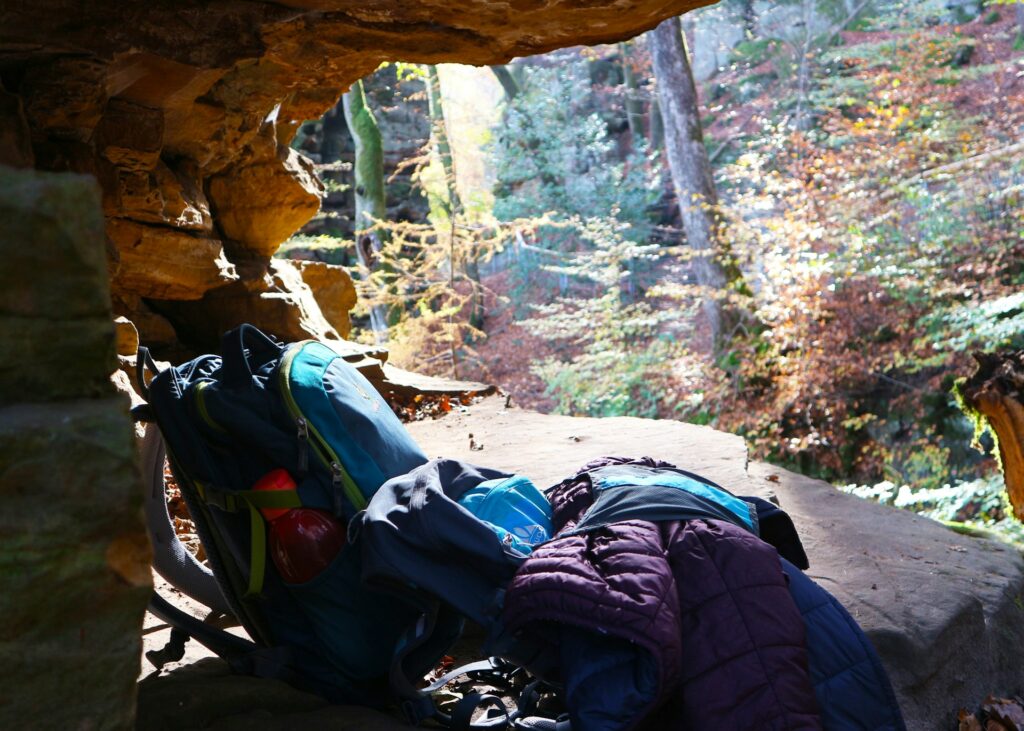
An emergency shelter provides crucial protection from the elements if you become stranded overnight or need to wait out dangerous weather conditions. Ultralight options include reflective emergency blankets (space blankets) that reflect body heat while providing wind and rain protection, bivvy sacks that function as minimalist sleeping bags, or lightweight tarps that can be configured in multiple ways depending on conditions.
These compact shelter options typically weigh just a few ounces yet can prevent hypothermia in unexpected overnight situations where exposure represents the primary threat. For hiking in particularly remote or challenging environments, consider carrying a more substantial emergency shelter like a lightweight tent or hammock system if weight constraints permit. The ideal emergency shelter balances minimal weight and volume with sufficient protection to maintain your core temperature and prevent moisture-related heat loss during an unplanned bivouac.
10. Illumination
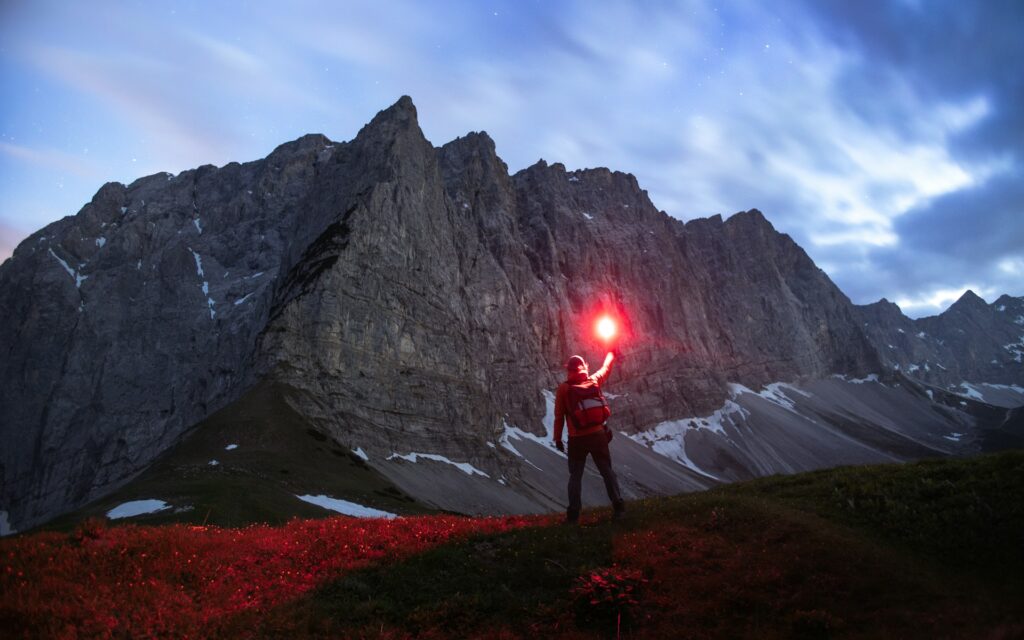
Reliable lighting solutions ensure you can navigate safely if your hike extends beyond daylight hours, whether planned or due to unexpected delays. Headlamps represent the optimal choice for most hiking scenarios, providing hands-free illumination that follows your gaze while keeping your hands available for climbing, cooking, or consulting maps. Look for models offering multiple brightness settings to balance visibility needs with battery conservation, plus a red-light mode that preserves night vision and disturbs wildlife less than white light.
Always carry spare batteries appropriate for your light source, storing them separately to prevent accidental drain and protect against moisture. Consider including a small backup light source like a mini flashlight or keychain light that provides redundancy should your primary illumination fail due to damage or battery depletion.
11. Communication Device
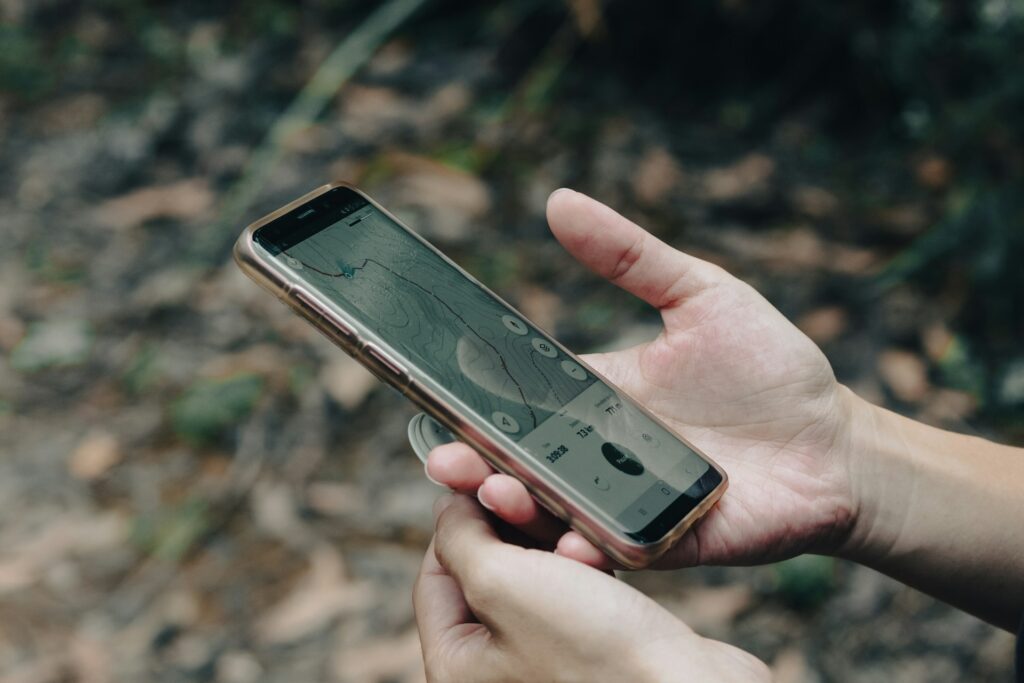
The ability to summon assistance represents a critical safety component for hikers venturing beyond reliable cellular coverage areas. Traditional smartphones provide excellent communication in areas with service but become ineffective in many wilderness settings where signal coverage is limited or nonexistent. For more remote adventures, consider satellite communication devices that maintain connectivity regardless of cellular infrastructure, ranging from simple one-way satellite messengers that can send pre-programmed emergency alerts to more sophisticated two-way satellite communicators allowing text messaging and location sharing from anywhere with a clear view of the sky.
Personal locator beacons (PLBs) offer another alternative, transmitting emergency signals directly to search and rescue authorities via satellite in life-threatening situations. Regardless of your primary communication solution, inform a trusted person of your planned route and expected return time before departing, creating an additional safety layer should communication devices fail.
12. Insect Protection
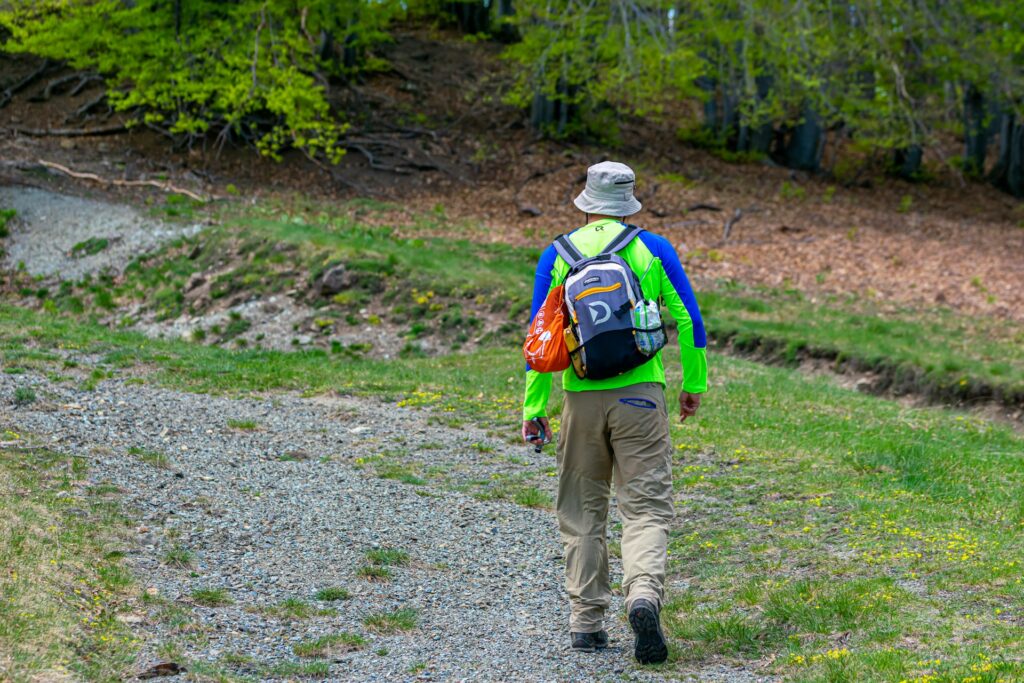
Effective insect management enhances both comfort and safety during your hiking adventures, particularly in regions where insect-borne diseases present significant health risks. EPA-registered insect repellents containing active ingredients like DEET, picaridin, or oil of lemon eucalyptus provide reliable protection against mosquitoes, ticks, and other biting insects when applied to exposed skin according to product instructions. Clothing treatments containing permethrin offer additional protection by actually killing insects that land on treated fabric, creating an effective barrier that lasts through multiple washings.
Physical barriers like lightweight bug nets for your head or specialized bug-proof clothing provide chemical-free protection options for those with sensitivities or concerns about repellent use. When hiking in areas known for high tick populations, perform thorough body checks during breaks and immediately after completing your hike to identify and properly remove any attached ticks before disease transmission can occur.
13. Whistle and Signaling Devices

Signaling capability provides essential communication options during emergency situations when electronic devices fail or injuries limit mobility. A quality whistle produces piercing sound that carries much farther than the human voice while requiring minimal energy expenditure, allowing you to signal for help even when exhausted or vocally impaired. The international distress signal consists of three short bursts repeated at regular intervals, a pattern rarely occurring naturally that alerts potential rescuers to an emergency situation.
Supplement auditory signals with visual options like a small signal mirror that can flash reflected sunlight visible for miles under clear conditions or brightly colored fabric that contrasts with natural surroundings to increase visibility from distance or air. For night signaling, chemical light sticks provide hours of visibility without batteries, though they function as single-use items that should be reserved for genuine emergency situations.
14. Repair Kit and Tools

Equipment failures in remote locations can transform minor inconveniences into significant problems without appropriate repair capabilities. A basic repair kit should include multi-purpose adhesive patches for clothing, tent, or rain gear tears; a small roll of duct tape wrapped around a hiking pole or water bottle for temporary fixes ranging from boot sole reattachment to pack repairs; and several safety pins for clothing malfunctions or improvised fastening needs.
Depending on your specific equipment, consider adding items like spare shoelaces that can replace broken boot laces or serve as improvised cordage, tenacious tape for specialized gear repairs, and a small sewing kit with heavy-duty thread and needles for more substantial fabric repairs. For hikers using trekking poles or other mechanical equipment, include any specialized tools required for field-adjusting or repairing these items, such as a small hex wrench set or screwdriver bits that match your gear’s fasteners.
15. Personal Identification and Emergency Contact Information
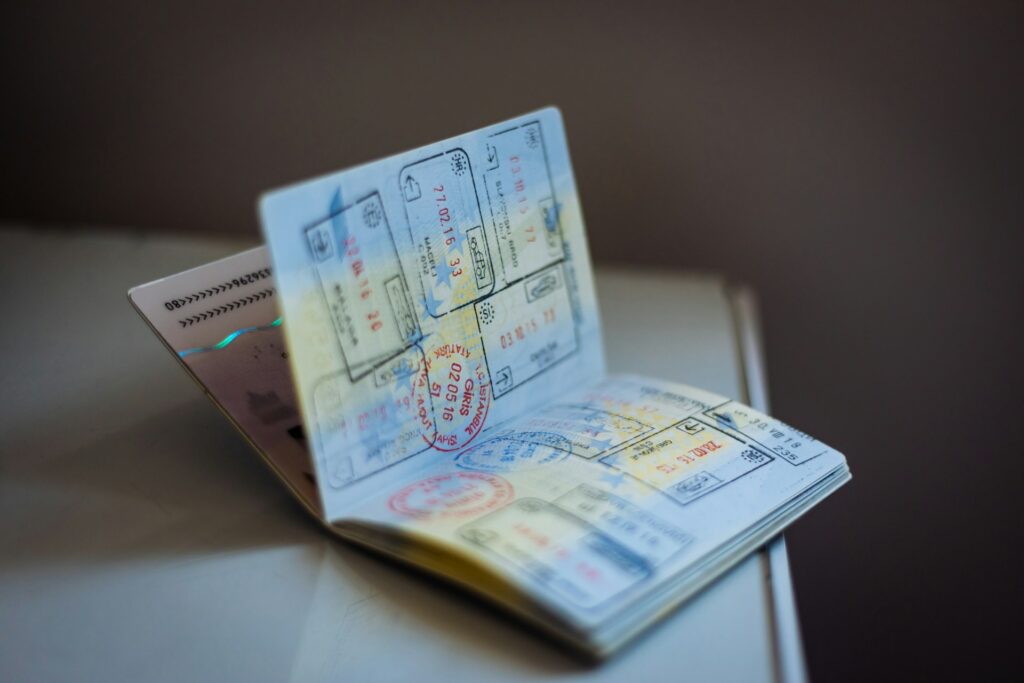
Carrying identification and emergency contact details provides crucial information for first responders should you become incapacitated during your hiking adventure. Include a weatherproof card listing your full name, emergency contact numbers, relevant medical conditions, current medications, and known allergies that might impact emergency treatment decisions. Consider carrying a copy of your health insurance information to facilitate medical care if you require evacuation or treatment at unfamiliar facilities.
For hikers with specific medical conditions like diabetes, epilepsy, or severe allergies, specialized medical ID jewelry provides immediately visible information to first responders even if you’re unconscious. While this final essential item hopefully remains unused, its presence ensures that emergency personnel can make informed decisions about your care and quickly notify your designated contacts should a serious situation arise during your hiking adventure.
Conclusion
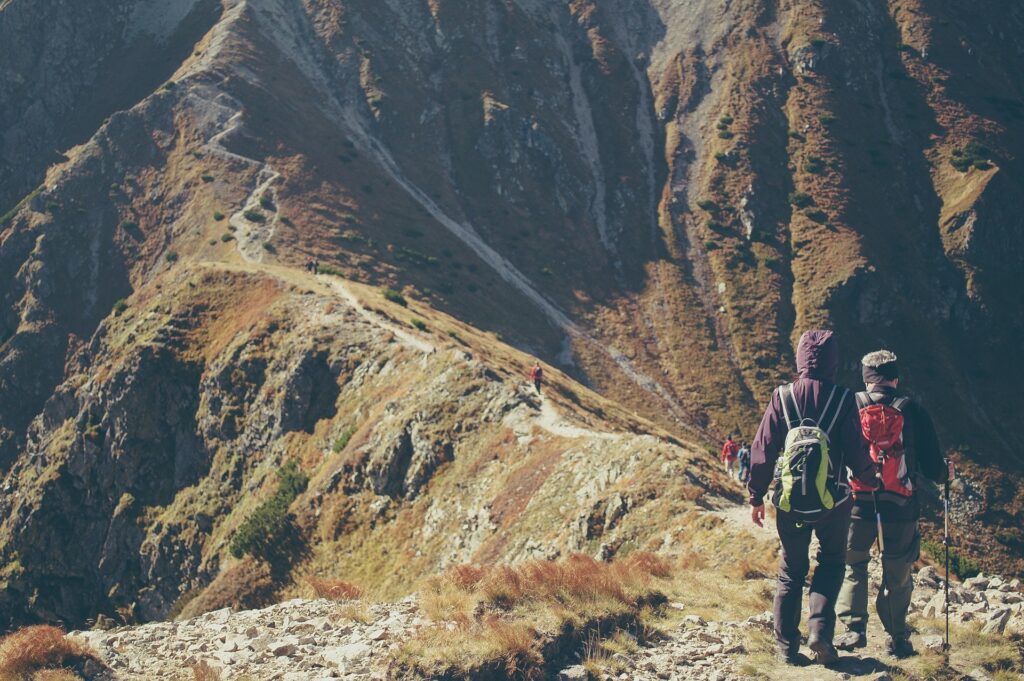
The 15 essentials outlined above represent the foundation of responsible hiking preparation, balancing reasonable weight considerations with comprehensive readiness for both expected challenges and unforeseen emergencies. As you gain experience, you’ll likely refine your personal kit based on specific hiking environments, seasonal considerations, and individual preferences.
Remember that these items serve not just as safety equipment but as tools that enhance your confidence and capability in outdoor settings, allowing you to focus more fully on the natural beauty and physical rewards that draw us to hiking in the first place.
By embracing thorough preparation, you transform potentially dangerous situations into manageable challenges and create the conditions for truly memorable wilderness experiences. The time invested in assembling and maintaining your essential hiking kit pays dividends in peace of mind, personal safety, and the freedom to fully embrace the adventure that awaits on every trail.

